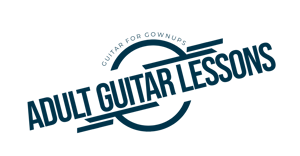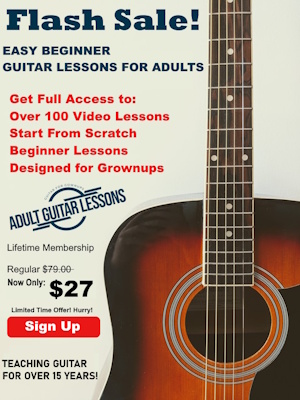For the past several centuries, musical pieces have been communicated in written form through the use of traditional music notation.
In this way, virtually any musical piece can be expressed and translated among musicians. It’s a system that has worked well for many years and continues to do so today.
It can, however, be fairly complicated to understand for the musician that is not classically trained. The endless array of quarter notes, half notes, whole notes, sharps, flats, time signatures, key signatures, bass clefs, treble clefs, rests, measures, and indecipherable symbols, can be mind boggling – to say the least.
By nature, we as guitar players, are always looking for an easier way to do things – so as a way of avoiding the drudgery of spending years learning how to read traditional music notation – Tablature (or TAB) was developed.
The beauty of TAB is that it is a simple way of communicating guitar licks and riffs in an easy to understand format that virtually anyone can get a grip on.
In order to read TAB, the first thing to know is that it is illustrated using 6 horizontal lines. These 6 lines represent the 6 strings on the guitar, and are viewed with the 1st string (high E) on top, and then down in order, as follows:
E————————————————— (1st string)
B————————————————— (2nd string)
G————————————————— (3rd string)
D————————————————— (4th string)
A————————————————— (5th string)
E————————————————— (6th string)
In a typical TAB piece you will see numbers at various locations on the horizontal lines. These numbers represent the fret that should be played on the corresponding string.
For example:
E————————–2–3———————–
B——————–3———————————
G————–0—————————————
D——————————————————-
A——–5———————————————
E—-3————————————————-
In the TAB above you would start by playing the note that is on the 3rd fret of the 6th (low E) string.
Then the note on the 5th fret of the 5th (A) string.
Next, the “0” means to play the open string. So you would play the open 3rd (G) string.
Then play the note on the 3rd fret of the 2nd (B) string.
And finish by playing the notes on the 2nd – then 3rd frets – of the 1st (high E) string.
As you can see, it’s really pretty easy!
In addition to single notes, you can also notate full chords using TAB by stacking the notes vertically.
Look at the next example:
E——-2—————-0—————–0———–
B——-3—————-0—————–2———–
G——-2—————-1—————–2———–
D——-0—————-2—————–2———–
A————————-2—————–0———–
E————————-0—————–x————
In the above illustration there are three chords notated.
The first chord is a standard open “D” chord.
The second example is an open “E” chord.
The third example is an open “A” chord. Also notice that in this example there is an “x” on the 6th string. This simply tells you that the string with the “x” should not be played.
In addition to notations for fret numbers, many TAB pieces will include various symbols that indicate common guitar techniques. These are often expressed in terms of letters and can sometimes vary according to the composer of the TAB.
Some common symbols you may encounter are:
h = “hammer on” (ex. 3h5 = play the note on the 3rd fret, then hammer on to the 5th fret)
p = “pull off”
b = “string bend”
r = “return of a bent string to the original note”
s = “slide” – also used are the / and \ symbols to indicate a slide up (/) or slide down (\)
v = “vibrato”
t = “finger tap” (with right hand for right handed guitarists)
The Downside of TAB
As easy as TAB is to read and understand, there are two main problems with using it to communicate musical pieces.
1. TAB does not have the ability to express rhythms and time signatures. In other words, the guitarist must be familiar with the song in order to interpret the rhythmic qualities of the song.
2. TAB is written solely for guitar players, so it is functionally useless for musicians that play other instruments.
Overall, however, TAB is a great way for a guitar player to pick up new licks, riffs, runs and chords in a simple to learn format, without having to devote years of study to formal music notation.
Enjoy!



